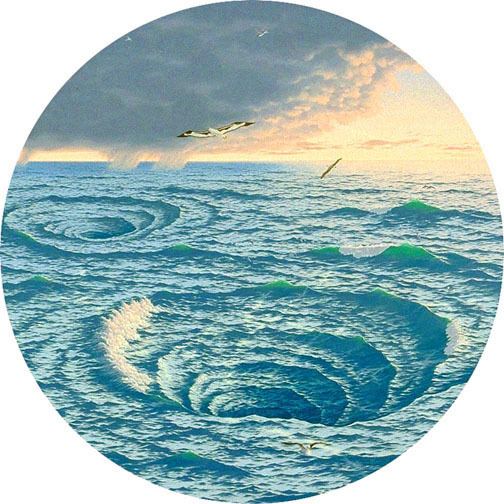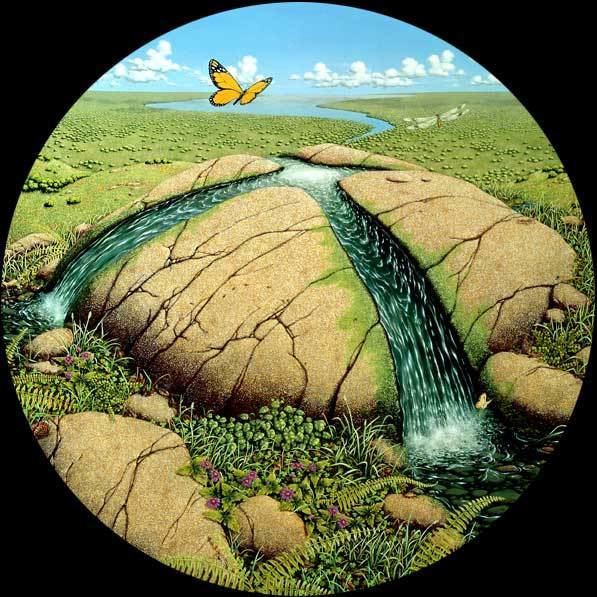Name Bill Martin Role Artist | Books Bill Martin, Lost Legends | |
 | ||
Died October 28, 2008, Stanford, California, United States | ||
Bill Martin (born January 22, 1943, South San Francisco, California - d. October 28, 2008, Stanford, California, age 65) was a realist, visionary artist. "Bill Martin's images possess an inexplicable compelling power," wrote Walter Hopps, the Smithsonian Institution's Curator of the 20th Century American Art Collection.
Contents

Career

Martin’s work has been shown at the New York Museum of Modern Art, the Solomon R. Guggenheim Museum, the Smithsonian, the Whitney Museum in New York, the Biennale de Paris, the Art Institute of Chicago and the San Francisco Museum of Modern Art (where he was at the center of the popular Baja exhibition). Martin began his career in the San Francisco Bay Area and lived much of his life in Mendocino, California.
Legacy
The distinguished art critic Thomas Albright reviewed Martin’s work in Rolling Stone, writing:
The landscapes Martin does are the kinds of paintings it takes months — sometimes even a year — to finish: an exacting craftsman, and perfectionistic taskmaster, he will spend weeks on a painting that may seem already near completion to a less exacting eye…. Martin’s specialty is circular, tondo-shaped canvases filled with a profusion of plants, trees, animals, cascades and freshets, painted in bright, vivid colors and with the meticulous precision of medieval illumination or Persian miniature art. More so than any other contemporary visionary, his paintings fulfill the pre-Raphaelite ideal of nature seen through "eyes without lids."
Albright continued that Martin’s art "seems to carry nature worship and ideal of Adamic man that found expression not only in Pre-Rafaelite art, but also in the Hudson River and Rocky Mountain schools of American landscape painting, and particularly in the transcendental allegories of Thomas Cole." Martin himself acknowledged the influence of the Hudson River School masters in his work: "They were doing what I wanted to do. I was impressed by the scale of their paintings and their ability to create depth and luminescence. I didn’t want to just paint pretty pictures. I was looking for something more."
San Francisco Chronicle art critic Kenneth Baker wrote that Martin had "one artistic foot in Surrealism and the other in the tradition of light-soaked 19th century American landscape painting," practicing "a representational style so fastidious that everything he paints takes on a preternatural clarity." Martin often painted on round or semicircular canvases, about which Baker wrote:
The half tondo format gives his picture spaces a dome-like curvature that makes them feel to the eye like complete worlds. Although perhaps only Photo-Realism can compare to Martin's paintings in their degree of finish, his work has nothing to do with the camera. It manifests an intensity of imagination we all wish we could summon at times…. His half-tondo images are obsessive declarations of love for painting's capacity to objectify — and exaggerate — sensations of space and light.
Whitney Museum curator Robert Doty wrote that Martin’s work creates "visions of Arcadian splendor, meticulously rendered landscapes which suggest a nostalgia for Eden and the availability of peace and joy through an expanded awareness of the beauty inherent in the land." Martin’s work was described as "one of the most successful examples" of the art-poster trend, and Artweek's David Clark estimated that Martin’s reproductions (and those of his contemporary Gage Taylor), "are on millions of walls throughout the western world."
Education
Martin earned his bachelors and masters in fine arts at the San Francisco Art Institute. Martin later taught at the Art Institute, as well as the University of California, Berkeley, San Jose State University and College of the Redwoods.
